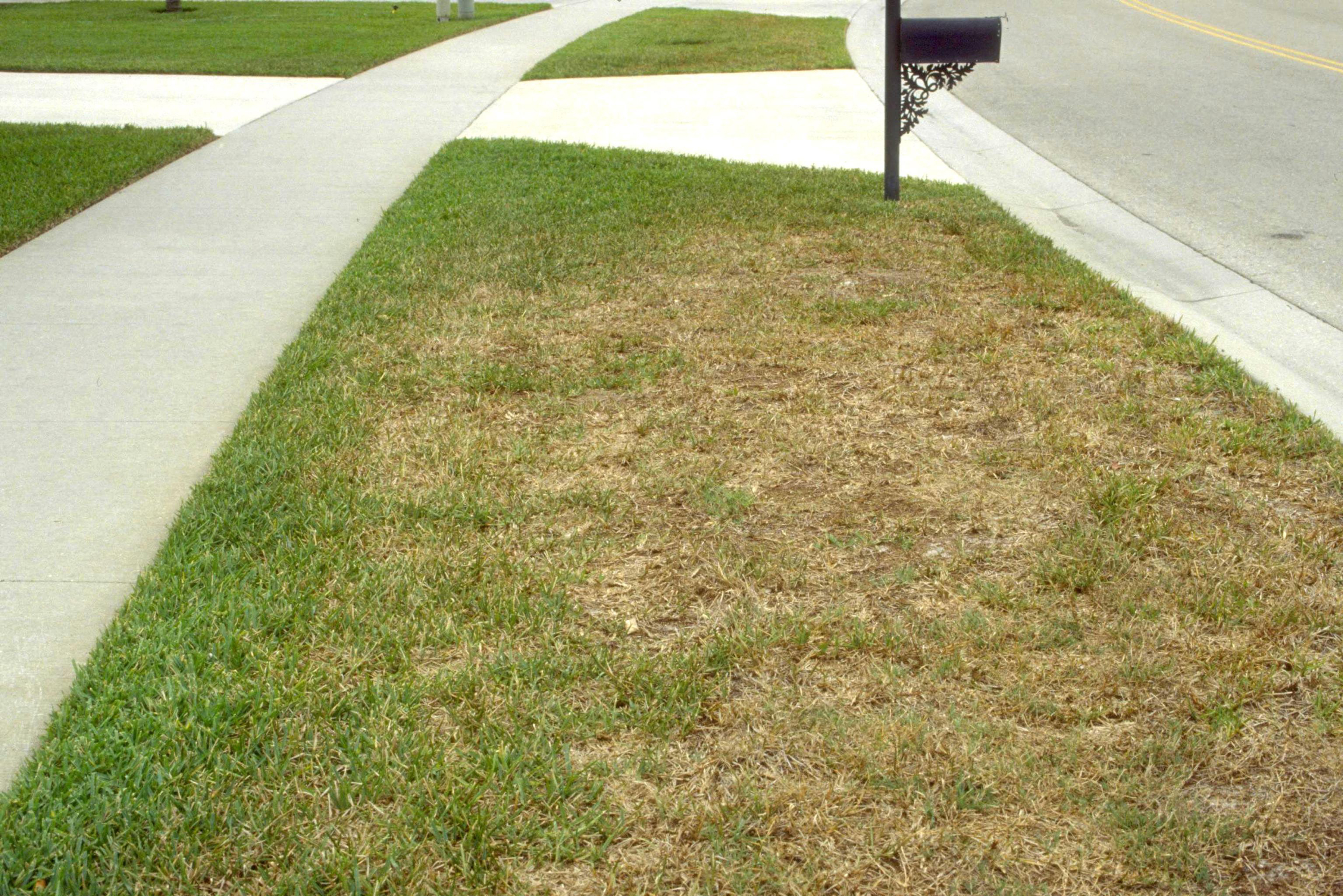When and where is this pest the most prevalent?
Chinch bugs are most prevalent from late spring to mid-fall and are typically found in St. Augustine lawns, although they are occasionally found in Zoysia yards as well. They love hot, dry soil and will almost always start damaging the grass near concrete. They like to start by a sidewalk or driveway and work their way out into your lawn.
How can I identify this as the problem in my lawn or landscape?
Chinch bugs can be tricky because they love to attack yards already weakened by drought stress, and their damage looks very similar to drought stress. Many people assume their lawn is just dry and just increase their irrigation settings when in reality they need a lawn insect control application to control the chinch bugs.
This is especially important as we experience the worst drought in over a century, as confirmed by the Gainesville Sun. Drought stress and Chinch bug damage not only look similar, but they also compound each other because of how a chinch bug feasts on your lawn.
Locating chinch bugs can be done by shoving a coffee can into the soil and filling it with water. If you see flea-like insects floating to the top, those are chinch bugs. They are ant-sized pests that range from red to black (depending upon age) and have a white stripe across their back.
How does it occur and how can I prevent it?
Chinch bugs occur mostly due to cultural practices such as lack of irrigation or the grass being cut too short, however that isn’t the only case. Chinch can also terrorize a neighborhood by going from lawn to lawn, attacking any lawn that isn’t on a lawn pest program.
Lawn pest prevention comes down to a mixture of properly maintaining the lawn’s health with proper amounts of water and proper mowing height, and being protected with a preventive insecticide that repels all lawn-damaging insects.
What can I do to resolve the issue?
To control chinch bugs in Gainesville yourself, there are products you can buy a the local home improvement store. I highly recommend using the liquid products and buying a sprayer, though, as the granular products aren't nearly as effective. The granular lawn insect control products need the perfect amount of irrigation that won't dilute the product down beyond effectiveness, but also not under-irrigate where the granule doesn't dissolve.
If this is something you would like us to take care of, please call our office at (352) 378-5296 or email our office at info@themasterslawncare.com.













 Insecticides applied Properly will Protect St Augustine Turf From Gainesville Chinch Bugs. The Turf on the left was sprayed regularly to prevent Chinch bugs - the right side is untreated.
Insecticides applied Properly will Protect St Augustine Turf From Gainesville Chinch Bugs. The Turf on the left was sprayed regularly to prevent Chinch bugs - the right side is untreated.